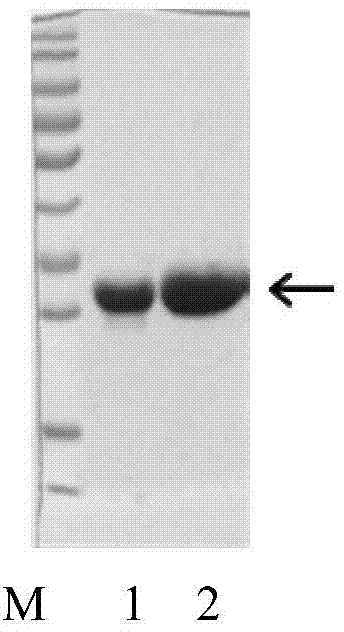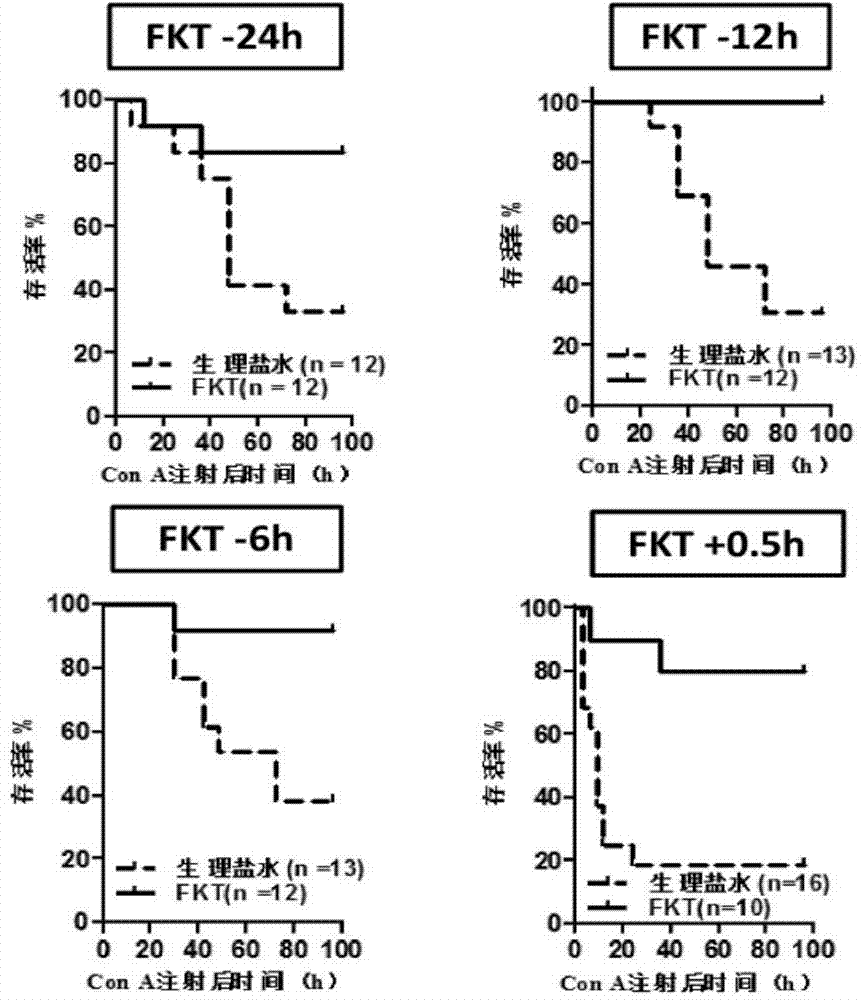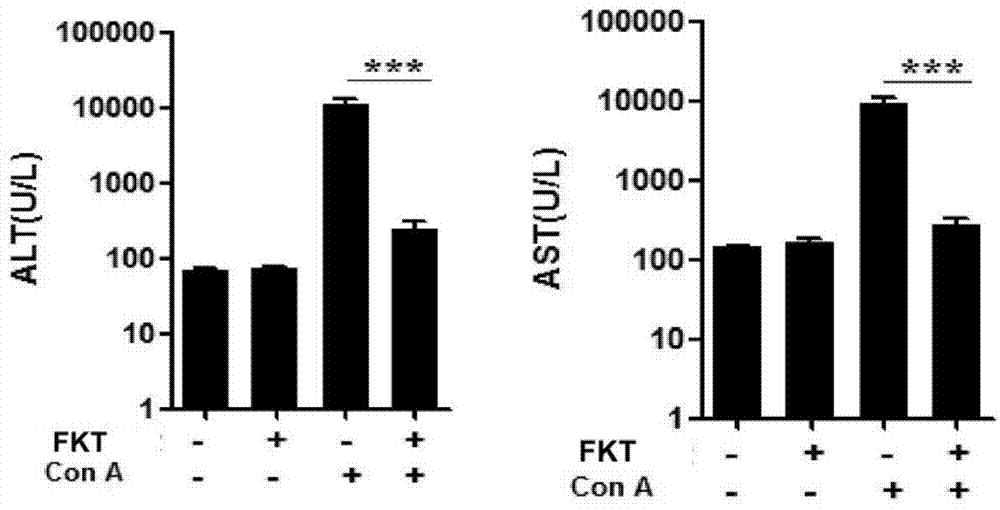Novel application of radiation-resistant peptide proteins
A technology of radioresistant peptides and proteins, which is applied in the field of new applications of radioresistant peptides and proteins, and can solve problems such as unreported effects
- Summary
- Abstract
- Description
- Claims
- Application Information
AI Technical Summary
Problems solved by technology
Method used
Image
Examples
Embodiment 1
[0051] Embodiment 1, the preparation of radioresistant peptide protein (FKT)
[0052] The artificially synthesized radioantipeptide protein (FKT) encoding gene sequence 1, the amino acid sequence of the encoded protein radioantipeptide (FKT) is sequence 2 in the sequence list.
[0053] The FKT coding gene shown in Sequence 1 was inserted between the SmalI and SalI sites of the pBV220 prokaryotic expression vector to obtain a recombinant vector, which was named pBV220-FKT.
[0054] Transform the radioresistant peptide expression plasmid pBV220-FKT into BL21 Escherichia coli to establish expression engineering bacteria, and cultivate them at 30°C until the cell density is OD 600 =0.6 or so, raise the temperature to 42°C to induce the expression of the radioresistant peptide gene, and after 4 hours of induced expression, the bacteria are collected by centrifugation, crushed by ultrasonication, and the precipitated part retained by high-speed centrifugation is the crude inclusion ...
Embodiment 2
[0057] Example 2. Application of radioantipeptide in inhibiting liver injury
[0058] 1. Radioantipeptide reduces the mortality of mice with liver injury caused by Con A
[0059] The mouse model of acute liver injury was established: 8-week-old C57BL / 6 male mice (body weight 18-22 g) were bred in a barrier environment, and the light alternating time was 12 hours; concanavalin A (hereinafter referred to as Con A, C7275, Sigma company) induced acute liver injury model, Con A lethal dose is 25mg / kg body weight in this model, Con A is diluted to 25mg / kg with the NaCl aqueous solution (physiological saline) of concentration of 0.9% to obtain Con A solution with sterile injection , injected rapidly through the tail vein of mice with an injection volume of 200 μl.
[0060] The specific experiment is as follows:
[0061] Divide C57BL / 6 male mice into two groups of 12 mice each:
[0062] Experimental group (injection of radioantipeptide protein): 24 hours, 12 hours, 6 hours and 0.5 ho...
PUM
| Property | Measurement | Unit |
|---|---|---|
| Molecular weight | aaaaa | aaaaa |
Abstract
Description
Claims
Application Information
 Login to View More
Login to View More - R&D
- Intellectual Property
- Life Sciences
- Materials
- Tech Scout
- Unparalleled Data Quality
- Higher Quality Content
- 60% Fewer Hallucinations
Browse by: Latest US Patents, China's latest patents, Technical Efficacy Thesaurus, Application Domain, Technology Topic, Popular Technical Reports.
© 2025 PatSnap. All rights reserved.Legal|Privacy policy|Modern Slavery Act Transparency Statement|Sitemap|About US| Contact US: help@patsnap.com



